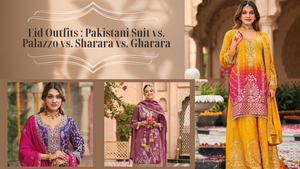What is organza silk fabric?

Introduction:
organza fabric is very famous because of its elegance, luxury, and transperency appearance.organza silk famous in the fashion world because of its high quality silk material, variety of color collections,various colours collection and delicate appearance.let's learn about organza silk history,uses, maintenance advice, and applications in this blog.
history of Organza Silk:
organza name originated from word "organize" which means high quality fabric yarn.organza currently produced in many countries such as China, India, and Italy, among others. organza silk was initially woven in an asian country.it first woven in china. Over the course of time, it spread to asia and europe.
Characteristics that are associated with Organza Silk:
- Lightweight: Organza silk has become famous for its light weight and transperency; even though the cloth is transperent and thin, it is still woven very tightly.
- crispness of texture: not like other materials Organza has a texture that is both rigid and crisp because it is tightly woven.
- Shiny Sheen: silk are naturally shine material gives more beautiful look to the oranza silk.It gives a more elegant, beautiful and luxurious appearance.
- Sturdiness:Although it has a delicate appearance, organza is actually a strong material and has a beautiful shape.
With its sheerness and delicacy, organza silk is admired in both classic and modern fashion. Its adaptability lets it be utilized to make elegant, sophisticated clothes. Learn how organza silk is used to make salwar suits, sarees, gowns, and lehenga cholis.
Uses of Organza Silk:
Organza silk is famous in the fashion industry,with its sheerness and delicacy, organza silk is admired in both classic and modern fashion. Its adaptability lets it be utilized to make elegant, sophisticated clothes. Learn how organza silk is used to make salwar suits, sarees, gowns, and lehenga cholis.
1. Salwar Suits:
(A) Anarkali Suits:
The flowing, frock-style top of Anarkali salwar suits is generally made of organza silk. Lightweight and firm, the fabric enables enormous, layered designs that keep their shape. For weddings and special occasions, Anarkali outfits with organza overlays and embellishments appear royal.
(B) Straight and A-Line Suits:
Organza silk adds beauty to straight-cut and A-line salwar suits. The fabric may be utilized for the kameez or dupatta, giving it an elegant appearance. Organza silk embroidery and sequins improve the style for formal parties.
Anarkali Suits
Straight-cut and A-line salwar suits
2. Sarees:
(A)Traditional:
Organza silk sarees are quite popular in India. The translucent, crisp fabric makes these sarees lightweight and easy to drape. Zari, embroidery, and beaded sarees add luxury to traditional organza sarees.
(B)Designer and Modern Sarees:
Designers of modern sarees employ organza silk to combine traditional and modern styles. The fabric's versatility allows for creative draping and patterns. A sheer organza pallu with elaborate decorations may make a plain saree stand out.
3. Lehenga Cholis:
(A)Traditional Lehenga Cholis:
Traditional lehenga cholis employ organza silk for volume and elegance. The firm fabric makes elegantly flared skirts that keep their shape. For weddings and holiday festivities, organza lehengas with intricate embroidery, zari work, and embellishments are elegant.
(B)Modern lehengas:
Modern lehenga cholis are made from organza silk and combine tradition and modernity. Sheer organza dupattas and trendy cholis update traditional clothing. Fashion-forward people like organza lehengas because they can be designed creatively.
Care Tips for Organza Silk:
The delicate and rich organza silk needs specific care to stay beautiful and last. Taking care of your organza silk clothes can keep them looking great. Important organza silk care tips:
1.washing:
(A)Hand washing:
The safest way to clean organza silk is by hand. Handwash organza silk clothing as follows:
- A basin of cold water will prevent fabric shrinkage and loss of form.
- Add a little mild detergent for fragile materials. Avoid bleach and strong chemicals.
- Gentle Washing: Submerge and gently agitate the clothing. Scrubbing or rubbing can damage sensitive textiles.
- Rinse the clothing thoroughly in cold water to remove all detergent.
(B)Dry Cleaning:
Highly decorated or delicate organza silk clothes should be dry-cleaned professionally. Ensure the cleaner has sensitive fabric knowledge to avoid harm.
2. Drying:
- Air Drying:
- Organza silk is best dried in the air.After washing, put the item flat on a clean, dry towel. Roll the towel gently to remove excess water without wringing or twisting.
- Reshape and Dry: Lay the clothing flat on a dry towel or drying rack away from direct sunlight and heat. This prevents shrinkage and keeps fabric in shape.
3. Ironing at low heat:
- Be careful when ironing organza silk.Set your iron to the lowest silk-safe heat.
- Protection: Place a small cloth or pressing cloth between the iron and organza silk to avoid direct contact. Avoiding fabric burning and damage.
- Gently push the iron on the fabric without force. Use steam sparingly to eliminate wrinkles.
4. Storage:
(A) Hanging:
How to keep organza silk clothes:
- Padded hangers minimize creases and keep clothes in shape.
- Breathable Cover: Protect the garment from dust and enable airflow with a breathable fabric bag. Avoid plastic covers, which trap moisture and mildew.
(B)Flat Storage:
For non-hangable items:
- To avoid creases, place acid-free tissue paper between garment folds.
- Flat Box: Keep the folded garment in a flat, airy box out of direct sunlight and dampness.
5. Handling a Gentle:
Carefully handle organza silk to avoid snagging and tears.
- Avoid Sharp Objects: Snags and pulls can occur when sharp objects, jewelry, and rough surfaces touch the cloth.
- Avoid wearing organza silk under heavy or rough outerwear to reduce friction.
6. Stain Removal and Spot Cleaning:
To remove organza silk stains:
- Action: Gently blot the discoloration with a clean, wet cloth immediately. Avoid rubbing, which spreads stains.
- Mild Solution: Use a fabric-specific stain remover or mild detergent. It should be tested in an inconspicuous spot to avoid fabric damage.
FAQs:
1.can organza silk print or dye?
- Though it can be printed or colored, organza silk requires particular dyes and procedures to guarantee the colors remain vivid and the integrity of the fabric is preserved. Professionals should do it if one wants the greatest outcomes.
2. Is silk organza fit for every kind of skin?
- Indeed, most skin types fit organza silk and it is usually hypoallergenic. But some people with really sensitive skin could find it quite irritating from its clean texture.
3. How might I get organza silk's wrinkles out?
- Use a low-heat iron with a pressing cloth between the iron and the organza silk to wrinkle-free it. As an alternative, keep a steamer at a safe distance to prevent direct touch with the fabric.
4. Could I work from home sewing organza silk?
- You can sew organza silk at home, but it calls for careful handling. Cut with sharp scissors; stitch using a small needle. Better still, use clips since pins can leave holes. Start little piece practice to become at ease with the fabric.













